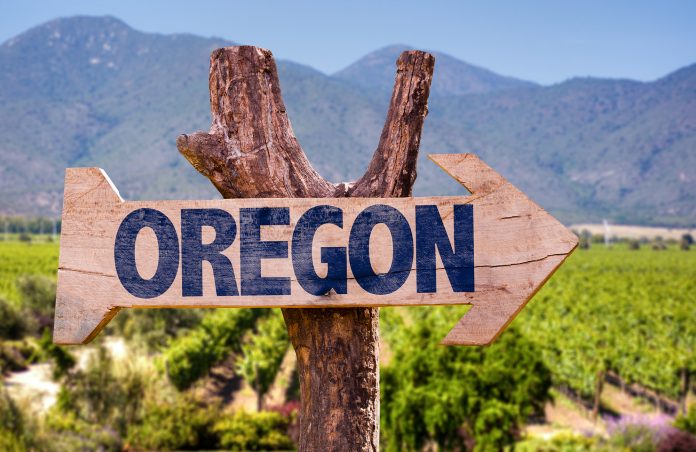Though it has a relatively short, five-decade tenure of serious commercial wine growing that comprises just 1% of the US’s wine market, the state of Oregon has solidified a well-deserved reputation for producing world-class wines. This is quite an accomplishment for a wine industry newcomer. Its wines regularly rank in global wine competitions and win marks of high praise from professional critics and enthusiastic aficionados alike.
The protagonists that founded Oregon’s first wineries perceptively recognized a vital fact. Oregon has effectually similar “terroir” and climatic conditions as Burgundy, France. So these oenophilic forefathers reasoned the land would be well adapted to producing Burgundian wines and they proceeded to plant Oregon’s hillsides with Pinot Noir. The vines, grapes and resulting wines crafted in Old World styles were such a rousing success that big name Burgundian wine producers have subsequently purchased land and set up outposts in Oregon’s prestigious wine growing regions.
While almost three-quarters of all vines in Oregon are Pinot Noir, the second most planted grape variety is another varietal native to Burgundy, Pinot Gris. Richer and more aromatic than their Pinot Grigio counterparts, Oregonian Pinot Gris have won fans around the world and received accolades of their own.
While there are a few valleys of note flanking the Umpqua and Rogue Rivers in the southwest portion of the state, most of the premier vineyard land is in Willamette Valley between the coastal mountains and the Cascade Range in the northwest corner. The remarkable regions lining the northern border of Oregon are Columbia and Walla Walla Valleys, but these areas are heavily planted with Cabs and Chards so the wines there are more classically ‘Washington’ even though the vineyards politically fall in Oregon. That being said, it is of little wonder that three-quarters of the state’s designated wine regions are located in Willamette Valley.
Vineyards in Willamette are planted at higher elevations on the valley’s steep slopes for maximum sun exposure and to mitigate the risk of frost in the early and late periods of the growing season. Cooling oceanic breezes pour through the breaks in the coastal mountains to moderate warm summer temperatures and the vines benefit from a measurably dry summer climate. Additionally, the valley boasts large temperature differences between the hot days and cool nights during the growing season which is a highly sought after factor that aids in proper grape development.
Lastly, there is one other element that sets Oregon apart from locales with more well-established wine markets. Even with the influx of Burgundian royalty into the domain, the youthful less structured nature of the local industry has persisted resulting in many small boutique wineries. Family-run businesses are more common while large-scale corporate producers are less so. This also leaves wineries free to specialize in eco-friendly practices such as organic or biodynamic winegrowing that may give them a competitive marketable advantage over volume-focused wineries.
So while Oregonians may have gotten lucky with good terroir, it is their knowledge and ingenuity that has fostered a meteoric rise to wine producing stardom in just a few short generations. Taste this legacy in the making tonight with a nice Oregonian Pinot and raise your glass to toast, “Willamette, Dammit!”



